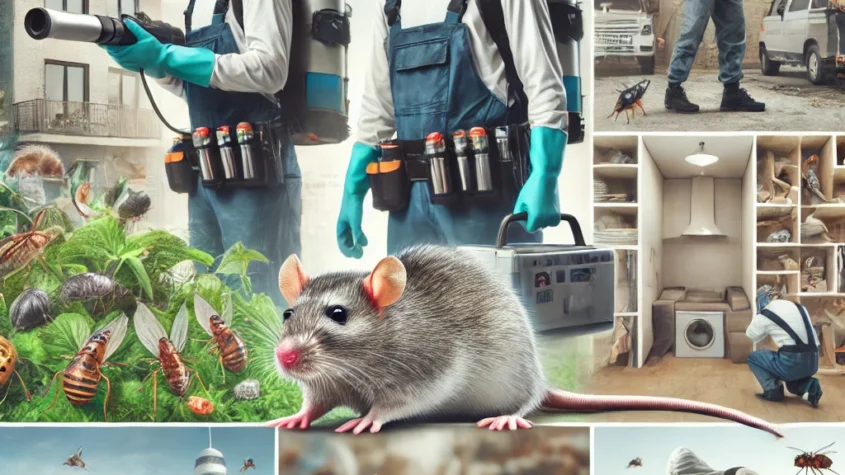
Rats pose a significant problem in urban areas, including Vancouver. Effective rat control Vancouver involves a combination of prevention, monitoring, and eradication techniques. Residents must recognize the signs of a rat infestation and take immediate action to address it.
Understanding the habits and behaviors of rats can aid in creating a proactive approach to control. This includes securing food sources and eliminating potential nesting sites around properties. It is essential to consult with pest control experts for tailored solutions that fit specific situations.
Vancouver’s diverse environment provides both challenges and opportunities for managing rat populations. Implementing effective strategies can lead to a rat-free living space, enhancing the overall quality of life for residents.
Understanding Rat Infestations in Vancouver
Rat infestations pose serious challenges for residents and businesses in Vancouver. Recognizing the signs of rat presence and identifying common entry points can aid in effective prevention and control measures.
Signs of Rat Presence
Identifying rat activity early can prevent larger infestations. Common signs include droppings, gnaw marks, and nests.
- Droppings: Fresh droppings are usually dark and roughly the size of a grain of rice. They are often found in areas where rats frequent.
- Gnaw Marks: Rats will chew through various materials, including wood and plastic. Look for clean-edged holes and scuff marks.
- Nests: Rats create nests using shredded materials like paper and fabric. These nests are often hidden in secluded areas such as attics or basements.
Additionally, nocturnal activity may be heard as scratching or scurrying sounds, especially at night. A consistent increase in sightings—particularly during dusk or dawn—can also indicate a growing problem.
Common Rat Entry Points
Understanding how rats gain access to buildings is crucial for effective prevention. Key entry points include:
- Cracks and Holes: Rats can squeeze through openings as small as half an inch. Inspect foundations, walls, and around utility pipes for gaps.
- Doors and Windows: Damaged screens and improperly sealed doors are common entry points. Ensure that doors close tightly and windows are screened.
- Vents and Exhausts: Unsecured vents can serve as pathways for rats. Installing mesh screens can help block access.
- Drainage Systems: Rats can enter through sewer systems. Installing drain covers can prevent this entry.
Identifying and sealing these entry points is essential for protecting properties from infestations. Regular maintenance and inspections significantly reduce the risk of rat activity.
Professional Rat Control Methods
Effective rat control in Vancouver involves a comprehensive approach that includes thorough inspection, exclusion techniques, baiting and trapping, and sanitation measures. Each method plays a vital role in ensuring long-term management of rat populations.
Inspection and Assessment
A thorough inspection is crucial for identifying rat activity and potential entry points. Professionals examine both interior and exterior spaces, focusing on common areas where rats are likely to nest, such as attics, basements, and crawlspaces.
Signs of infestations include droppings, gnaw marks, and burrows. After the inspection, a detailed assessment helps determine the severity of the problem.
This information guides the choice of appropriate control strategies tailored to the specific situation. Accurate identification of the rat species may also influence the techniques used for effective removal.
Rat Exclusion Techniques
Exclusion techniques aim to prevent rats from entering structures. Professionals seal visible entry points using materials like steel wool, caulk, or metal sheeting.
Key areas to target include gaps around windows, doors, and foundations.
Maintaining proper sealing reduces the likelihood of infestations. Additionally, installing door sweeps and repair any damaged vent screens can limit access to indoor areas.
Landscaping management also plays a role. Keeping vegetation trimmed and away from structures minimizes potential nests close to buildings, enhancing overall prevention effectiveness.
Baiting and Trapping
Baiting and trapping are commonly used methods for eliminating existing rat populations. Professionals determine the safest and most effective bait types based on the specific environment and rat species.
Rodenticides can be applied in tamper-resistant bait stations to reduce the risk to non-target animals and pets. These stations are strategically placed near active sites identified during the inspection.
Snap traps provide another option, offering a quick and humane way to capture rats. Proper placement and baiting techniques increase the likelihood of successful trapping while minimizing avoidant behavior from rats.
Sanitation and Prevention
Sanitation is essential for maintaining a rat-free environment. Professionals evaluate the property for potential food sources and recommend removing attractants.
Secure trash in rodent-proof containers and promptly clean up spills or food debris.
Additionally, proper storage of food, such as keeping it in sealed containers, helps deter rats.
Routine inspections and maintenance of areas prone to nesting contribute to long-term prevention strategies. Educating property owners about the importance of these practices enhances overall effectiveness in rat control efforts.
How Experts in SEO Service in India Utilize Data Analytics for Predictive SEO Strategies
Though it sounds like a large and complex term, data analytics is basically only a means o…










